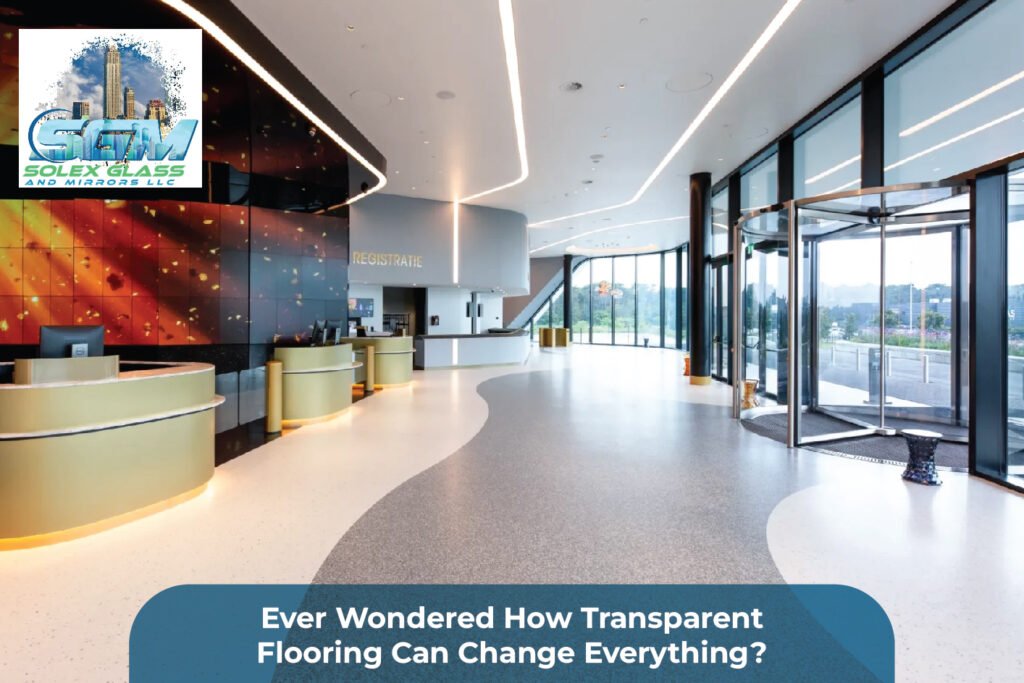
Picture this — you’re standing on a clear glass floor, looking down at a lush garden or a sparkling pool below. Sounds fancy, right? Well, transparent flooring isn’t just about drama — it’s about adding style, light, and a touch of the unexpected to your space. From glass flooring in modern lofts to laminated panels in trendy cafes, see-through floors are having a serious design moment. I’m here to walk you through transparent flooring ideas, how it works, where you can use it, and a few real-life stories from people who dared to go see-through — literally under their feet. Let’s step onto the glass, shall we?
1. Why Transparent Flooring is Taking Over Modern Design
Transparent flooring isn’t just a fancy trick for luxury hotels. Homeowners, designers, and even businesses love it for how it opens up a room. With glass flooring or transparent floor panels, you can:
- Make small spaces feel bigger
- Bring in natural light
- Create show-stopping focal points
I remember stepping into a boutique downtown — they had a laminated glass floor that looked down into a wine cellar. Talk about a conversation starter! If you’re aiming for that “wow” moment, transparent flooring is the way to go.
2. Popular Transparent Flooring Ideas for Every Space
There’s no one-size-fits-all here. Some people choose transparent balcony flooring to blend indoor and outdoor spaces. Others go bold with structural glass floors over staircases or mezzanines.
- Transparent flooring for stairs is a hot trend — it makes your staircase look like it’s floating.
- Anti-slip transparent flooring is key for wet areas like bathrooms or pool decks. Nobody wants a slip-and-slide!
Get creative — add LED lights underneath or try colored laminated glass flooring for extra personality.
3. Where to Use Transparent Flooring — Indoors and Outdoors
You might think transparent floors belong inside mansions, but they work outdoors too. Imagine a deck with transparent floor tiles that frame your garden below. Or a rooftop patio with a peek-through panel — instant drama!
Indoors, transparent floor panels can highlight architectural features or connect multiple levels. Some daring homeowners even install them in bedrooms. Risky? Maybe. Gorgeous? Absolutely.
4. How Safe is Transparent Flooring?
Let’s bust a myth — transparent doesn’t mean fragile. Structural glass floors use toughened or laminated glass, so you’re not about to crash through like in the movies.
Safety comes down to:
- Using the right transparent flooring panels thickness
- Choosing slip-resistant finishes (anti-slip transparent flooring is a must in wet zones)
- Following a trusted transparent floor installation guide
When done right, transparent flooring is as safe as any solid surface.
5. Tips for Installing Transparent Floors Without Regret
Transparent floor installation needs experts. Seriously — don’t DIY a glass floor over your living room. Work with experienced installers who know structural glass floors inside and out.
I always tell people: plan for maintenance too. Transparent flooring maintenance is simple, but scratches and smudges show easily, so regular cleaning is a must. A quick polish keeps that dramatic shine going strong.
6. Customization Options That Make It Yours
One of my favorite things about transparent flooring? It’s endlessly customizable. You can play with:
- Tint and color layers (laminated glass flooring comes in shades)
- Integrated LED lights for a futuristic vibe
- Custom patterns, textures, or frosted panels for privacy
When comparing transparent flooring vs glass flooring, remember they’re often the same thing — it’s the style and finish that make yours unique.
7. Transparent Flooring: Pros, Cons, and What to Watch Out For
So, should you go for it? Here’s the quick scoop:
Advantages:
- Stylish, modern vibe
- Opens up spaces visually
- Highlights cool features underneath
Disadvantages:
- Needs regular cleaning
- May show wear and scratches
- Requires professional installation
I once visited a café with transparent floor panels over an old wine cellar — it looked amazing, but the owner had to remind guests not to freak out when they walked over it!
FAQs
What is the average transparent flooring thickness?
Most structural glass floors are 1–1.5 inches thick, but always check with your supplier.
Is transparent flooring safe for stairs?
Yes! Transparent flooring for stairs is popular — just use anti-slip coatings for safety.
How do you maintain transparent flooring?
Regular cleaning with a glass-safe cleaner does the trick. Avoid abrasive scrubs that scratch the surface.
Can transparent flooring be used outdoors?
Absolutely. Transparent flooring outdoor use is great for patios, balconies, and decks — just choose weather-resistant panels.
How durable is transparent flooring?
When installed properly, it’s surprisingly tough. Laminated glass flooring is engineered to handle foot traffic and loads safely.
Can transparent flooring be repaired?
Minor scratches can be buffed out. For cracks or chips, call a pro — never ignore structural damage.
Where can I find transparent flooring suppliers?
Look for reputable local or international suppliers who specialize in structural glass. They’ll guide you on safety and installation.
Final Reflections
Transparent flooring isn’t just a trend — it’s a design statement that can transform how your space looks and feels. From stunning glass flooring to practical laminated panels, you have endless ways to make your home or business shine. If you’re ready to take the next step, talk to professionals like Solex Glass and Mirrors — they’ll help you plan, customize, and install your dream see-through floor safely and beautifully.
